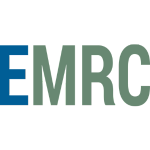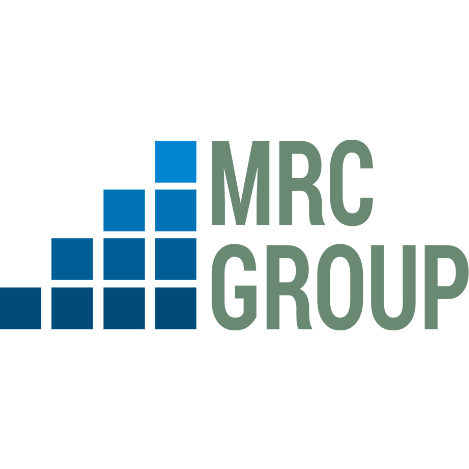










Traditional cooking methods, which involve burning firewood, charcoal, or natural gas, contribute to greenhouse gas emissions (GHG Emissions), and indoor and outdoor air pollution. This dependence on these fuels for cooking poses a threat to the environment and individual health due to the significant amounts of carbon dioxide released. According to a report by the Clean Cooking Alliance, approximately 120 megatons of climate pollutants are discharged every year from traditional cooking methods.
Due to practices like harvesting wood for fuel, traditional cooking methods also contribute to forest and environmental degradation.
In addition, the health of people who practice traditional cooking methods can be affected by the smoke from these cooking methods, which can have a significant negative effect on their respiratory organs, eyes, nose, and throat. The World Health Organization (WHO) estimates that globally about four million untimely deaths occur annually due to exposure to household air pollution, primarily in underdeveloped and developing countries with minimal income.
In Nigeria, many homes, especially in rural areas, use traditional cooking methods for both household and commercial use. For those who use wood, they engage in deforestation, others who use charcoal will have to burn the wood excessively to get the charcoal and the smoke emitted from these woods affects the environment leading to environmental degradation caused by air pollution which further contributes to climate change.
However, clean cooking, which includes the use of highly energy-efficient stoves can reduce fuel use by 30-60 percent, resulting in fewer GHG emissions. In most urban areas in Nigeria, households have begun to incorporate clean cooking.
Following the launch of the Sustainable Development Goals (SDGs), clean cooking has become an important aspect of sustainability, as it protects the climate and environment, improves the health standards of people, empowers marginalized populations, especially women, and helps consumers save energy, time, and money.
Efficient cookstoves reduce the fuel needed to cook, which helps families save money. In addition, these cookstoves lessen the burden on families who must source traditional cooking fuels by collecting them.
The Adoption of Clean Cooking Technologies in Nigeria
Over the years, Nigeria has made some progress in implementing clean cooking technologies. One successful example is the National Clean Cooking Scheme (NCCS), which was launched in 2014 by the Federal Ministry of Environment under its Renewable Energy Programme. The NCCS set an objective to distribute at least four million clean cookstoves in each of the six geopolitical zones. Another objective was to provide 20,000 Wonder Bags, which is an innovative, non-electric slow cooker, to Nigerians within five years. This project aimed to stop deforestation which exposes the country to environmental problems.
This initiative led to the NCCS Forum, which is an important annual gathering of stakeholders working to speed up the production, distribution, and consumption of cleaner, more efficient cookstoves and fuels in the country. The forum aims to strengthen the relationship between public and private partners in the clean cooking industry and enhance the development of the value chain, balanced product supply and demand, technology innovations, and transfer or sharing of knowledge for a seamless transition to carbon-neutral cooking.
Benefits of Clean Cooking Adoption
1. Health Benefits: The use of traditional cooking methods increases the risk of household air pollution, which can lead to health issues such as respiratory and cardiovascular diseases, eye problems, etc. By adopting clean cooking methods, households can improve their health outcomes and reduce the risk of health problems associated with traditional cooking methods.
2. Environmental Benefits: The use of clean cooking technologies reduces GHG emissions and helps promote climate action. By using cleaner fuels and more efficient cookstoves, the gas emitted from firewood and charcoals during traditional cooking is prevented, and households can contribute to reducing deforestation and environmental degradation, preserving biodiversity, and improving local and global environments.
3. Cost and Time-Saving Effectiveness: The upfront cost of clean cooking technologies may be higher than traditional cooking methods, but the long-term savings that would have been spent on fuel and health expenses can make clean cooking a cost-effective option. In some cases, subsidies and financing options are provided by governments and private organizations to help households afford clean cooking technologies. Also, the use of clean cooking technologies can save time by reducing the need for fuel collection and preparation. Improved and effective cookstoves can also cook food faster and more efficiently, freeing up time for other activities.
4. Social Benefits: The use of clean cooking technologies improves empowerment for women by reducing their workload and time spent on cooking and even general house chores and improving their access to education and economic opportunities.
5. Economic Benefits: The adoption of clean cooking technologies also creates job opportunities and accelerates local economies by promoting the production and sale of clean cooking technologies.
Barriers To Clean Cooking Adoption
1. Lack of Awareness and Cultural Beliefs: Lack of awareness and the inability to understand the benefits of clean cooking technologies can be a barrier to adoption. Households may not be aware of the health, environmental, and economic benefits of clean cooking, they also may not know how and where to access clean cooking technologies. A lot of communities, particularly in rural areas, may also be influenced to continue using traditional cooking methods due to their cultural beliefs and practices. Some populations even believe that cooking with firewood or traditional stoves improves the taste and aroma of food or that
traditional cooking methods are essential to preserving cultural heritage. As a result, they find it hard to upgrade and incorporate clean cooking technologies into their lifestyle.
2. Affordability: The upfront cost of clean cooking technologies may be discouraging and a significant barrier for low-income households. Even if households in rural areas understand the benefits of clean cooking, affordability may still be a challenge as most of them earn low incomes and will see the sources of traditional cooking methods as an easier and cheaper means for them.
3. Supply Limitations: The limited availability of clean cooking technologies in certain areas can be a barrier to adoption. If households, especially those in rural areas cannot access clean cooking technologies in their local markets, they may be less likely to adopt them, because when they think about the stress of traveling to urban areas to get these technologies, they get discouraged.
Recommendations
1. Conduct Awareness Programmes: It is important to engage with local communities, understand their cultural beliefs and practices towards cooking, and highlight success stories of clean cooking practices to help address any misconceptions that may exist. Also encouraging populations to adopt clean cooking practices with the approval of religious or community leaders can help educate more people on the benefits of clean cooking methods on their health, environment, and economy.
2. Subsidies and Financing Schemes: It is important to implement targeted subsidies and financing schemes such as microfinance loans and pay-as-you-go models to make clean cooking technologies more affordable for every household. Exploring innovative business models such as stove rental or leasing schemes could make clean cooking technologies more accessible.
3. Partnership with Local Entrepreneurs and governments: Partnering with local entrepreneurs to manufacture and distribute clean cooking technologies at affordable prices can help reduce the cost and encourage accessibility. Partnering with local government can improve transportation and other infrastructure required, particularly in rural areas to make it easier for households to access clean cooking technologies.
Conclusion
Clean cooking is crucial for development, as it protects the environment, improves health, empowers women, and saves energy, time, and money. It is the sustainable solution for traditional cooking technologies, that release GHGs and contribute to climate change. Nigeria has made progress in implementing clean cooking technologies, with the NCCS aiming to distribute clean cookstoves and Wonder bags to Nigerians within five years. However, barriers to adoption include lack of awareness, cultural beliefs, affordability, and supply limitations. To overcome these barriers, targeted awareness campaigns, subsidies, and innovative financing models by government and private organizations need to be intensified. Governments, organizations, and communities can work together to improve access to clean cooking technologies and reduce the negative impacts of traditional cooking methods.












